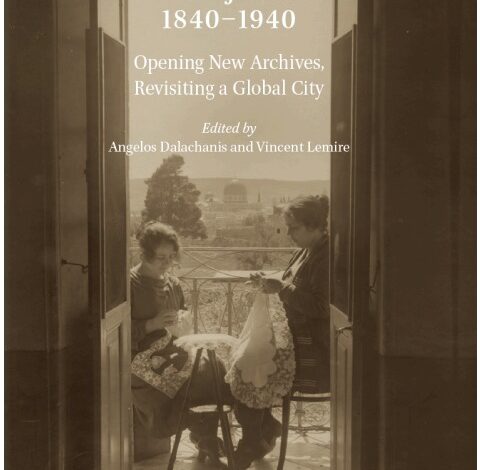
.
**Review of “Ordinary Jerusalem 1840-1940: Opening New Archives, Revisiting a Global City”**
Iyad Shamasnah
“Ordinary Jerusalem 1840-1940: Opening New Archives, Revisiting a Global City,” edited by Angelos Dalachanis and Vincent Lemire, is a profound scholarly work that unearths the vibrant, multifaceted history of Jerusalem through meticulous archival research. The book, part of the Open Jerusalem project, is an ambitious endeavor that offers a fresh perspective on the everyday lives of Jerusalem’s inhabitants over a century marked by significant political, social, and cultural transformations.
**Scope and Structure**
The volume is divided into four main sections, each focusing on different aspects of Jerusalem’s history:
1. **Opening the Archives, Revealing the City**: This section delves into various archival sources, including Ottoman censuses and personal papers, to reconstruct the daily lives and social networks of Jerusalem’s diverse communities.
2. **Imperial Allegiances and Local Authorities**: Here, the focus shifts to the interplay between local and imperial authorities, highlighting the complexities of governance and communal relations in Jerusalem.
3. **Cultural Networks, Public Knowledge**: This part explores the rich cultural tapestry of Jerusalem, examining literary and intellectual exchanges and the role of print media in shaping public discourse.
4. **Sharing the City: Contacts, Claims and Conflicts**: The final section addresses the social dynamics and conflicts that arose from Jerusalem’s unique position as a contested and multicultural urban space.
**Highlights**
One of the book’s strengths lies in its use of previously untapped archival materials. For example, Michelle U. Campos’s analysis of the Ottoman census (sicil-i nüfūs) provides invaluable insights into the demographics and social structures of Jerusalem’s population. Similarly, the exploration of visiting cards and advertisements by Maria Chiara Rioli offers a fascinating glimpse into the urban identities and economic activities of the city’s residents at the turn of the 20th century.
The section on the Ethiopian Orthodox community by Stéphane Ancel stands out for its nuanced portrayal of this often-overlooked group, revealing their social networks and daily interactions within the broader Jerusalemite society. The chapter by Şerife Eroğlu Memiş on waqf (Islamic endowments) studies, using appointment registers, also adds a crucial dimension to understanding the economic and religious landscape of the city.
**Critical Analysis**
The editors, Dalachanis and Lemire, succeed in their goal of presenting Jerusalem as a “global city” long before globalization became a buzzword. Their emphasis on the interconnectedness of various communities through trade, diplomacy, and cultural exchange challenges the often-simplified narratives of conflict and segregation that dominate much of Jerusalem’s historiography.
However, the book is not without its shortcomings. While the breadth of topics covered is impressive, the depth of analysis can vary. Some chapters, constrained by the limited archival material available, offer more descriptive than analytical accounts. Additionally, the dense academic language and extensive use of untranslated terms may pose a challenge for readers not well-versed in the subject matter.
**Conclusion**
“Ordinary Jerusalem 1840-1940: Opening New Archives, Revisiting a Global City” is an invaluable contribution to the historiography of Jerusalem. It enriches our understanding of the city’s complex social fabric and provides a model for future urban studies through its innovative use of diverse archival sources. Despite some minor limitations, the book is a must-read for scholars and students of Middle Eastern history, urban studies, and anthropology. It is a testament to the resilience and dynamism of Jerusalem’s ordinary inhabitants, whose lives collectively shaped the extraordinary history of this global city.





